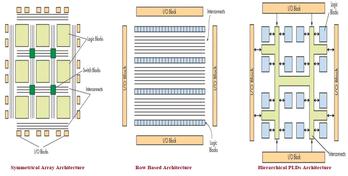DC Motor Control with FPGA: VHDL Source Code
Advertisement
This document provides VHDL source code for interfacing a DC motor with an FPGA.
VHDL Code
Library ieee;
Use ieee.std_logic_1164.all;
Use ieee.std_logic_unsigned.all;
Use ieee.std_logic_arith.all;
Entity dcmotor1 is
Port (
start, dir, clk : in std_logic;
pwm_out : out std_logic;
out_dc : out std_logic_vector(1 downto 0)
);
end dcmotor1;
architecture dcmotor_a1 of dcmotor1 is
signal clk1 : std_logic;
signal div : std_logic_vector (24 downto 0);
begin
process (clk, start)
begin
if (start = '0') then
div <= "0000000000000000000000000";
elsif (clk'event and clk = '1') then
div <= div + 1;
end if;
clk1 <= div(19);
end process;
process (clk1)
begin
if (clk1'event and clk = '1') then
if start = '0' then
out_dc <= "00";
elsif start = '1' and dir = '1' then
out_dc <= "10";
pwm_out <= '1';
elsif start = '1' and dir = '0' then
out_dc <= "01";
pwm_out <= '1';
end if;
end if;
end process;
end dcmotor_a1;
FPGA Pin Assignments (XC2S100TQ144-5)
| Connector | Device Pin | Property |
|---|---|---|
| 18 | P18/6 | Clk |
| 44 | P18/13 | Dir |
| 54 | P18/14 | Out_dc(0) |
| 56 | P18/11 | Out_dc(1) |
| 50 | P18/5 | Pwm_out |
| 43 | Start |
Explanation
This VHDL code defines an entity dcmotor1 that controls a DC motor based on the input signals:
start: A signal to initiate motor operation.dir: A signal to control the direction of the motor.clk: The main clock signal for the FPGA.
The outputs are:
pwm_out: A PWM signal to control the motor speed (currently always ‘1’ in this implementation).out_dc: A 2-bit signal to control the H-bridge (or similar driver) connected to the DC motor.
The architecture dcmotor_a1 implements the logic:
-
Clock Division: A process divides the input clock
clkto generate a slower clockclk1. This slower clock is used for controlling the motor logic. -
Motor Control Logic: Another process, triggered by
clk1, controls theout_dcandpwm_outsignals based on thestartanddirinputs.- If
startis ‘0’, the motor is stopped (out_dc <= "00"). - If
startis ‘1’ anddiris ‘1’, the motor rotates in one direction (out_dc <= "10"). - If
startis ‘1’ anddiris ‘0’, the motor rotates in the opposite direction (out_dc <= "01").
The
pwm_outsignal is currently always set to ‘1’, meaning the motor will run at full speed when active. For speed control, you would need to modify this logic to generate a proper PWM signal with a variable duty cycle. - If
Important Considerations
-
PWM Implementation: The current implementation lacks proper PWM generation for speed control. You’ll need to add logic to vary the duty cycle of the
pwm_outsignal. This could involve using a counter and comparing its value to a duty cycle value. -
H-Bridge Control: The
out_dcsignal is meant to control an H-bridge (or similar driver circuit) that drives the DC motor. You must design the H-bridge according to theout_dclogic. Ensure that the H-bridge you use can handle the voltage and current requirements of the DC motor. -
FPGA Pin Assignments: The provided pin assignments are specific to the XC2S100TQ144-5 FPGA. Adjust these according to your specific FPGA and board.
-
Clock Frequency: The clock division logic determines the frequency of
clk1, which affects how quickly the motor control logic responds. Adjust the divider value (currentlydiv(19)) to achieve the desired control speed.
Advertisement
 RF
RF
